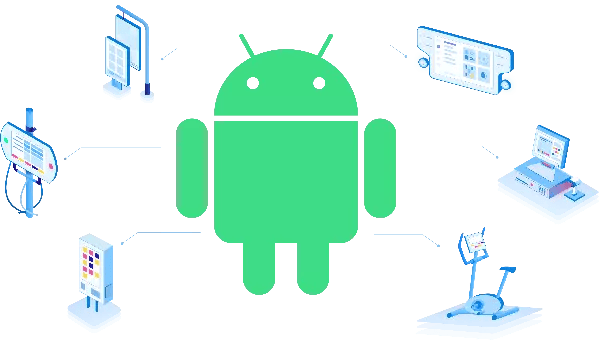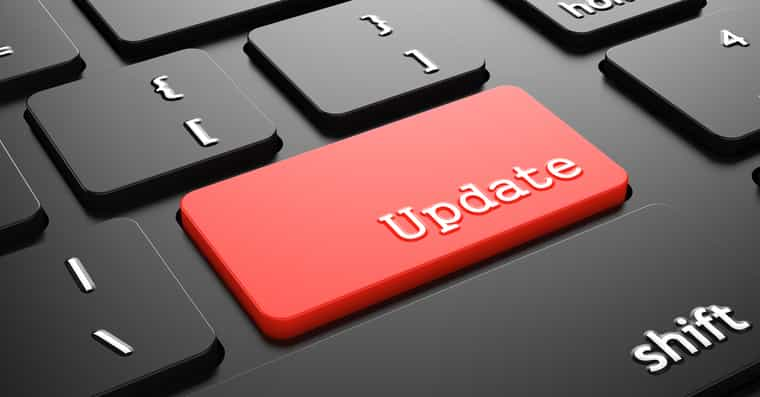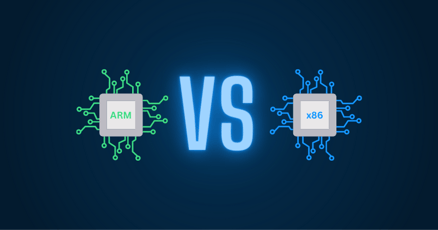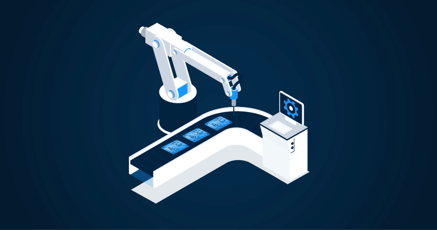The world is more connected than ever. Internet of Things (IoT) devices make up an enormous part of our day-to-day lives, and new ones are being added every day. Smart city cameras, point of sale (POS) terminals, smart parking meters, smart refrigerators, kiosk displays, fitness trackers, smart security systems — the list of new IoT devices is almost endless.
The software used to run these devices is very sophisticated. Like all software, it can sometimes contain bugs, or security flaws can be discovered after deploying the device out into the field. For a small fleet of devices, this might not be a catastrophe. But larger fleets, and fleets that are spread all across the world, need an IoT device management platform to be able to manage them properly.
Using an IoT device management platform, it is possible to push updates to these devices over the internet. But there are several other benefits to using an IoT device management platform. OEMs who manufacture IoT devices are looking more and more for IoT device management platforms that are robust and able to handle any aspect of that device's performance.
In this article, we are going to look at what an IoT device management platform is, what is expected of a good device management IoT framework, how to choose the right IoT platform device management tool, which remote IoT device management software is the best for your needs, what is device management in IoT, and the easiest way to set up and start using an IoT device management platform.
What is IoT device management?
IoT device management is the set of technologies and tools necessary to provision and monitor connected devices, as well as maintain them remotely throughout their lifecycle. IoT device management lets you fully control devices from a distance.
Who is IoT device management for?
To fully understand what is IoT device management, one must understand who it is for.
A device management platform IoT could be for both the consumer or manufacturer of an IoT device. For example, a company might purchase 100 handheld devices from a manufacturer that are used specifically in warehouse storage. The device might have a barcode scanner and connect to a centralized database for stock inventory.
The company purchasing the device is a logistics company. They don't have much time to tinker with devices and probably just want to buy something that works and keeps working. Although such a company might indeed have an IT department that could benefit from an IoT device management platform, a better value proposition from the OEM would be to sell the devices along with a maintenance contract.
By using an IoT device management platform, the OEM would be able to remotely provision, monitor, and maintain every device, as well as push updates to the device whenever a new software version is released. The OEM would thus deliver extra value to the customer through its IoT device management platform.
Over-the-Air update infrastructure
No discussion of what is device management in IoT would be complete without covering Over-the-Air updates.
Probably the strongest argument for having an IoT device management platform is the ability to push Firmware Over-the-Air software updates (FOTA updates) to devices.
OTA updates are crucial to keep devices functioning properly. They can be carried out on a schedule or pushed out manually using an IoT device management platform. They can also be pushed out to a subset of devices or even to just a single device to see if the update is working.
In Europe, providing these updates has now become a legal requirement in certain cases.
But running OTA updates successful is really quite extensive. It is more than just having the right code and the right operating system. OTA updates are a matter of having the necessary infrastructure in place to carry out automatic code builds, code-signing, uploading new versions, and rolling back failed updates. That infrastructure also needs the necessary staff to keep it working smoothly and maintained.
So an IoT device management platform is far more than a fancy cloud-based interface with buttons to change settings on each device. It must be connected to a powerful backend that keeps the entire system running smoothly.
Source: EBS Professional / Shutterstock
IoT platform device management features
Another way to fully grasp what is IoT device management is to know more about the features that a professional IoT device management platform offers.
Firstly, the IoT device management platform should be able to provision devices. This means getting the device ready to be handed off to end users or to be deployed to wherever they will be used. With an IoT device management platform solution, this all gets done through the platform dashboard. It doesn't need to be done on each device.
Device provisioning would include setting things up on the device such as:
- Screen configuration
- Product branding
- Component enabling/disabling
- Implementing any necessary third-party drivers
- Preferences for system applications
- Adding the authorized keys
- Any custom settings to overwrite default values
- Any custom values for standard system properties
Remote IoT device management platform
A fully remote IoT device management platform lets you manage devices via the cloud. This would be contrasted with an IoT device management platform that only lets you manage devices through an intranet, although this is also possible. There would of course be limitations to the latter because it would be limited to a single location.
The most common type of IoT device management platform is the remote one, and cloud-based (i.e., browser-based) versions of these IoT device management platforms are likewise the most common interface used for them.
Although they run fully within the browser, IoT device management platforms are connected to powerful back-end structures that take care of device updates and monitoring.
Two of the most important aspects of remote device management are:
- Device security
- Automation
Automating functions through an IoT device management platform means that fleet managers save themselves many hours in tackling situations manually. It also greatly reduces the potential for human error because tasks occur on a schedule. Finally, fewer resources are required to manage devices as a result of automation.
IoT device management platforms typically also provide the ability to remotely wipe or lock devices when they are lost or stolen.
Another important factor is to keep a device compliant with local regulations. In certain countries, devices that are carried by employees into their homes cannot have device location turned on. An IoT device management platform can implement policies that turn device location on or off. An IoT device management platform can also enforce policies on device password strength.
Devices can also be put into groups so that a particular policy, settings-change, or update is applied to all devices in a specific group only. For example, devices can be grouped by location, branch, or department.
Best of all, IoT device management platforms don't typically require that the operator have any particular programming knowledge. Everything is done via a simple user interface so that anyone of any skill level can successfully manage devices through the IoT device management platform.
How IoT device management software is changing
An IoT device management platform has two main parts:
- The hardware back-end infrastructure, such as the servers that are used and how they are maintained.
- The software. This would touch both the back end and the front end.
Platforms are able to manage certain devices, usually based on the installed operating system (OS). Many OEMs are now switching to Android OS because of its immense popularity, flexibility, touch-screen support, and familiarity to users. In the past, Android has only run on ARM processors but a new wave of cutting-edge devices now allows Android to run on x86 devices (Android x86).
This means that OEMs can maintain a seamless cross-platform user experience using a single OS for all their user-facing devices. It also means that they only need to choose one IoT device management platform to manage all of their devices.
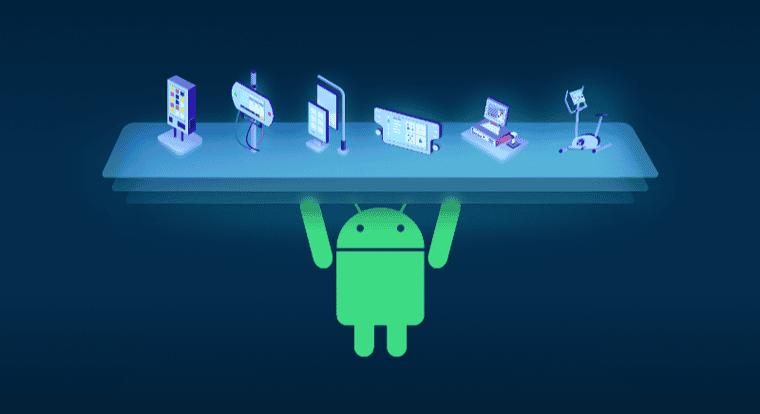
Choosing the best IoT device management software
There are many IoT device management platforms around but many only serve particular niches. That makes it difficult to make a fair comparison of each. For example, JFrog (formerly Upswift) is a great IoT device management platform. But it only serves Linux-based devices and would not work for any company that uses Android or other IoT devices.
The best IoT device management software would need to fulfill the following requirements:
- Has a strong team behind it that can maintain it, as well as maintain the OS on the device with regular security updates.
- Is reliable.
- Works with your chosen OS.
- Has an intuitive user interface (you don't need to have a computer science diploma to use it).
- Has excellent support. Sometimes, the "giants" suffer from poor support because they are simply too large to offer personalized service.
IoT device management platform example use case
Let's examine an example use case of establishing a solution to easily manage a fleet of IoT devices. For this example, we'll use a hypothetical software company that builds Android-based Shop Floor Control System Terminals used by thousands of employees across the world.
This OEM wants to provide regular updates to its devices as well as remote management through a robust IoT device management platform.
Specifically, the solution should:
- Be cloud-based so that all devices can be easily managed and monitored from anywhere.
- Offer long-term security because of regular OTA updates (Over-the-Air updates) to the Android operating system.
- Be scalable and cost-effective. They also want the device provisioning procedure to be as simple as possible.
- Include all Mobile Device Management (MDM) functionality — securing devices, implementing policies, automating actions, and controlling all aspects of a device.
The software company considers using stock Android on consumer tablets but the lack of robust update procedures and granular device control dissuades them from this option.
Because emteria has been built specifically to address these factors, the company decides to install emteria.OS — for embedded Android devices — on all its devices and thereby gain access to emteria's IoT device management platform called Device Hub.
Several other factors tip the scales in emteria's favor, specifically:
- Active support for the emteria.OS throughout its lifecycle
- The power of its cloud-based IoT device management platform
- The regularity with which OTA updates to the Android OS are delivered
- Support for Android fleet management
- Ability to apply group policies to a set of devices
- Excellent technical support by emteria's customer service team
- As close to an "out-of-the-box" solution as possible for everything they need
Outcome and impact
The use of this IoT device management platform results in dramatically shortened response and repair times. The company is also able to extend its service offering to include maintenance and remote management, which gives them a competitive edge. Customers are no longer just buying an IoT device. They are buying a device that will be actively upgraded and maintained.
As a result of implementing this IoT device management platform solution, the company is able to reduce response and repair times by as much as 90% for customer service requests.
The company can now use the extra time they've gained to focus on new devices and solutions.
The simplest way to get started with an IoT device management platform
Managing a fleet of devices properly without an IoT device management platform is simply impossible. But implementing an IoT device management platform requires far more than just tweaking code in the OS.
Yes, the device itself should have basic functionality to allow it to communicate with the IoT device management platform. But the IoT device management platform itself must be set up on robust servers with a team behind it to keep it running.
An IoT device management platform should allow managers to remotely monitor devices, enforce policies on them, remotely wipe them, and, most importantly, regularly update them using IoT OTA updates.
Emteria has built an enterprise-ready IoT device management platform that works out of the box to provide OEMs with all the functionality they need to manage the devices they sell to customers. By using emteria's Device Hub — dashboard software specific to IoT device management — OEMs can offer an additional level of service to their customers. Devices can be upgraded easily and so the value proposition is easy for them to understand.
But devices can also be actively monitored for potential threats or policy violations. Through the emteria IoT device management platform, changes can be made directly on the device to bring it back into compliance, thereby preventing potential fines from regulators.
Getting started with emteria's IoT device management platform is as easy as signing up for a free account with emteria, downloading the installer, and then running through the installation steps.
Learn more about IoT device management for Android devices. ⬇️
Build unique Android products, manage them remotely
See why emteria is the chosen Android™ customization & management platform for product builders — build Android products based on your requirements with all enterprise features you need.
-1.png?width=800&height=487&name=Android%20Use%20Cases(2)-1.png)


